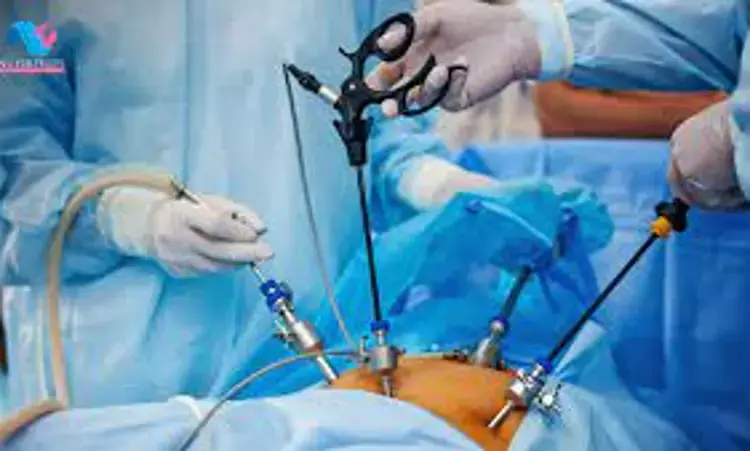- Home
- Medical news & Guidelines
- Anesthesiology
- Cardiology and CTVS
- Critical Care
- Dentistry
- Dermatology
- Diabetes and Endocrinology
- ENT
- Gastroenterology
- Medicine
- Nephrology
- Neurology
- Obstretics-Gynaecology
- Oncology
- Ophthalmology
- Orthopaedics
- Pediatrics-Neonatology
- Psychiatry
- Pulmonology
- Radiology
- Surgery
- Urology
- Laboratory Medicine
- Diet
- Nursing
- Paramedical
- Physiotherapy
- Health news
- Fact Check
- Bone Health Fact Check
- Brain Health Fact Check
- Cancer Related Fact Check
- Child Care Fact Check
- Dental and oral health fact check
- Diabetes and metabolic health fact check
- Diet and Nutrition Fact Check
- Eye and ENT Care Fact Check
- Fitness fact check
- Gut health fact check
- Heart health fact check
- Kidney health fact check
- Medical education fact check
- Men's health fact check
- Respiratory fact check
- Skin and hair care fact check
- Vaccine and Immunization fact check
- Women's health fact check
- AYUSH
- State News
- Andaman and Nicobar Islands
- Andhra Pradesh
- Arunachal Pradesh
- Assam
- Bihar
- Chandigarh
- Chattisgarh
- Dadra and Nagar Haveli
- Daman and Diu
- Delhi
- Goa
- Gujarat
- Haryana
- Himachal Pradesh
- Jammu & Kashmir
- Jharkhand
- Karnataka
- Kerala
- Ladakh
- Lakshadweep
- Madhya Pradesh
- Maharashtra
- Manipur
- Meghalaya
- Mizoram
- Nagaland
- Odisha
- Puducherry
- Punjab
- Rajasthan
- Sikkim
- Tamil Nadu
- Telangana
- Tripura
- Uttar Pradesh
- Uttrakhand
- West Bengal
- Medical Education
- Industry
PPF method may prevent pancreatic fistula after distal pancreatectomy: study

PPF method is useful for postoperative pancreatic fistula in distal pancreatectomy and is particularly effective when a thick pancreas or obese patient is involved according to a recent study published in the BMC Surgery.
In accordance with previous reports on the utility of polyethene glycolic acid (PGA) felt and fibrin glue for postoperative pancreatic fistula (POPF), we usually perform distal pancreatectomy (DP) with a PGA felt reinforcement stapler when dissecting the pancreas and cover the stump with PGA felt and fibrin glue (the PPF method). In this study, they retrospectively analyzed their distal pancreatectomy cases to compare the risk factors for postoperative pancreatic fistula and the postoperative course of patients receiving the PPF method of treatment versus that those receiving conventional treatment.
A total of 127 DP procedures performed in our department between January 2008 and June 2021 were retrospectively analysed.
The results of the study are:
- In the PPF method, grade B/C postoperative pancreatic fistula rate tended to decrease, and POPF rate showed a significant decrease.
- The duration of drainage and the length of postoperative hospitalisation were also significantly shorter with the PPF method.
- The risk of grade B/C postoperative pancreatic fistula significantly decreased with the PPF method if the pancreas was thick (> 13.5 mm) or the patients were obese.
Thus, the PPF method is useful for POPF in distal pancreatectomy and is particularly effective when a thick pancreas or obese patient is involved. Removing the drainage tube early in the PPF method may lead to early discharge.
Reference:
Kawasaki, K., Hayashi, T., Takahashi, M. et al. Covering reinforced staples with polyethylene glycolic acid felt-covered fibrin sealant to prevent pancreatic fistula after distal pancreatomy: a retrospective comparative study. BMC Surg 22, 349 (2022). https://doi.org/10.1186/s12893-022-01799-2
Keywords:
Keishi Kawasaki, Tatsuya Hayashi, Makoto Takahashi, Yasuhiro Morita, BMC Surgery, Postoperative pancreatic fistula, Distal pancreatectomy, Polyethylene glycolic acid felt, Fibrin glue
Dr. Shravani Dali has completed her BDS from Pravara institute of medical sciences, loni. Following which she extensively worked in the healthcare sector for 2+ years. She has been actively involved in writing blogs in field of health and wellness. Currently she is pursuing her Masters of public health-health administration from Tata institute of social sciences. She can be contacted at editorial@medicaldialogues.in.
Dr Kamal Kant Kohli-MBBS, DTCD- a chest specialist with more than 30 years of practice and a flair for writing clinical articles, Dr Kamal Kant Kohli joined Medical Dialogues as a Chief Editor of Medical News. Besides writing articles, as an editor, he proofreads and verifies all the medical content published on Medical Dialogues including those coming from journals, studies,medical conferences,guidelines etc. Email: drkohli@medicaldialogues.in. Contact no. 011-43720751


